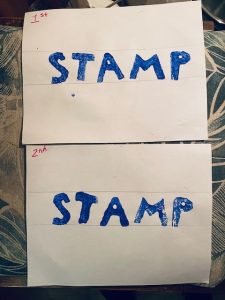After reading an overview of the project on the NASA, I made a mental note that although I did not yet have criteria for selection, my goal was to be as unbiased as possible. I skipped the podcast because I find that authors rarely pull off being neutral and I did not want to be swayed by anyone’s opinion. Instead, to get more facts, I watched a short documentary that explained how it was made and how to decode it.
Prior to listening I did some breathing exercise to clear my mind and be present, trying to avoid reading the titles and closing my eyes when listening. I played them in order hoping they would “speak to me” and lead me to a selection metric as I still did not have a plan. I got nothing from the first two, then the third (still with eyes closed) evoked a feeling.
So I decided to chose 10 songs that: 1- Conveyed an unequivocal feeling (whether the emotion or the song itself be pleasant to the listener). 2- The emerging feeling was pure and unbiased by lyrics or context. The idea is that this feeling would transcend humanity.
Of course, I could be extremely naive in thinking that I am unbiased and the feelings that I perceived are universal. I am however, surprise at my final 10, (let’s just say they are not songs I’d put in my spotify list), but they did indeed “touch me”. I am also surprised by the ones that I did not pick, like the Mexican one; I am half mexican and this is a folkloric dance song that my mother performed in International expos when I was younger. I actively listened, detaching from all positive associations, and got nothing from it.
So here are the songs and separately below, are the feelings that I perceived. I am curious to know if others got the same.
- Bach – WTK 2, no 1, Glenn Gould
- Men’s house song – Papua New Guinea
- Navajo night chan
- Panpipes and drum song – Peru
- Melancholy Blues-L Armstrong
- Jaat Kahan Ho – India – Surshri
- Fairie Round – cond David Munroe
- Bach – Gavotte en Rondo – A Grumiaux
- Beethoven 5th, part 1, Otto Klemperer
- Cranes in their nest-Japan(Shakuhachi)
……. (Scroll for associated feeling)
- Bach – WTK 2, no 1, Glenn Gould: Hope
- Men’s house song – Papua New Guinea: Worry
- Navajo night chant: Unity
- Panpipes and drum song – Peru: Rejoicing
- Melancholy Blues-L Armstrong: Relaxed
- Jaat Kahan Ho – India – Surshri: Melancholy
- Fairie Round – cond David Munroe: Innocence
- Bach – Gavotte en Rondo – Grumiaux: Dialogue (communicating)
- Beethoven 5th, part 1, Otto Klemperer: Power
- Cranes in their nest-Japan(Shakuhachi): Loneliness


